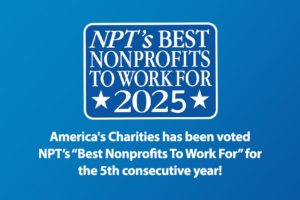Richard Conn, RingCentral US | January 12, 2021
4 Ways to Bring Out Your Employees’ Potential
3 in 4 employees are not reaching their potential
74% of employees believe they are not reaching their full potential. That is a shocking majority that raises concerns for the efficacy of any company, not to mention the mental well-being of those that work there.
That is three in four of your employees that could do more for your company. Businesses are only as effective as the sum total of the people that make them up.
It isn’t because employees are lazy, it’s because modern companies can be severely lacking when it comes to maximizing employee ability. Too often, employees are left feeling like they’ve fallen by the wayside. They are simply unable to engage fully with their work.
This lack of motivation affects not only their well-being but also your company’s bottom line. As a boss or manager, you need to nurture each and every one of your employee’s capabilities, skills, and passion.
So how do you bring out your employees’ true potential?
Method 1: Invest in your employees and they, in turn, will invest in you
It can be as simple as investing in them, their work, and their abilities.
This can take almost any form, but putting time, effort, or money into your employees can unlock better output from them.
In fact, the percentage of employees who feel that they can’t count on their employer is startling.
Source: Job Application Center
Employee loyalty is a soft concept, but that doesn’t mean it is unimportant. Workplace leaders should aim for 100% of their workforce to be able to count on them. It’s part of being a responsible leader. You can’t expect loyalty, however, until you have shown you are first in their corner.
You can show that you care about them as individuals – as well as their performance at work – by investing in the way they work. There are many workforce optimization solutions (WFO) that can make working easier, more effective, and less tedious. If you can gamify work, people are going to have more fun – and end up being more productive.
In addition, make their jobs easier. For example, invest in marketing automation platforms that will cut out the mundane, repetitive tasks that your marketing team slog through on a daily basis.
It is thought that 30% of the working day is spent searching manually for information. The more you automate, the less time wasted and the less frustrated your workforce.
Source: M-Files
You can also show that you value your employees’ growth by investing in training courses for them. It is reported that employees undergoing a training course are 37% more productive.
Professional development boosts morale and improves their skill sets — which can be beneficial for your company as well.
Method 2: Break down silos
The flash of inspiration can only strike if there is first a solid understanding of a company’s offering and background about its infrastructure. People can’t draw connections between different points if they don’t know the points exist in the first place.
One of the best ways to develop a shared understanding is to cross-pollinate your workers’ skills. Have your marketers sit with your sales team on a call and go through both the sales playbook practices and marketing strategies. Sit your designers with the social media team and use screen sharing to create a shared sense of understanding about a target audience.
When teammates understand each other, inter-colleague relationships deepen. The chasm between teams close. Before you know it, people begin to come up with clever solutions to each other’s problems.
Your company can grow through excellent team collaboration.
Even contingent workers can help to build up your teams’ skills. They are often widely skilled individuals with experience working with many different companies. They’ll have fantastic insights to share.
Make sure to use good cloud collaboration software if you have remote workers to keep them in the picture.
Social events can also help your teams to bond and become closer. Even during times like this when it’s prudent to remain socially distant, online events are encouraged and have quickly become the norm. The key is to help your employees interact and form true friendships, which helps their work lives become easier and more enjoyable. In turn, your employees will be more productive and likely have more loyalty to your business over the long-term.
Be sure that social meetups are as varied and inclusive as possible. For example, if your team only ever hosts happy hours, there might be a non-drinker who feels marginalized from the group activities.
Method 3: Employee engagement initiatives
One of the biggest obstacles to workers’ maximum potential is a lack of motivation. Or, more accurately, a lack of employee engagement.
Even if you love your work, there’s no guarantee that your employees are as passionate as you are. People have very different interests and stressors.
Employee engagement is all about inspiring your workforce. The result is your workers putting in 110% effort. When you motivate your workers, they in turn go that one step further and want the business to succeed, rather than doing the bare minimum.
Lack of engagement is a big, and often difficult to detect, problem. After all, the best work can’t be produced by people who don’t care about it, and the customer experience starts with an engaged workforce.
Source: Interact Intranet
However, there is an easy method for gauging your employees’ engagement – through an employee survey. In addition to a mass survey of the entire workforce, you could implement individual interviews with an employee to find out what they have achieved and what they want to do. You could work with them to rewrite their job descriptions so their intentions are aligned with their official role. You could create transparent ROI reports so that they feel like they are part of the business. There are just a few of the employee engagement initiatives you can try out.
Furthermore, you can try to engage team members with your company values and ethos. Your values as a business should be ones you are proud of. Make them clear to your employees and show them the steps you take to uphold them. Tap into the passions that each of us has.
Is your company environmentally responsible? Does it have good mental health awareness? Or does it give to charity? Use your corporate social responsibility (CSR) reporting to show your workers that the company is giving back to the world that you, and they, live in.
Method 4: Rewards and recognition
Unsurprisingly, people like to be listened to. They like to know that they exist and are making a difference. One of the easiest ways to kill potential in your staff is to take them for granted.
The employee of the month is a cliché for a reason. It is the easiest way to recognize someone for their work. However, it can just as easily become a token practice that holds little meaning.
You need to find ways to recognize the efforts and abilities of individual members in a meaningful way. It doesn’t have to be big and flashy.
Publicly praising the work an employee does can give a huge boost to their morale, and spur their colleagues onto greater work. Announce team-based wins. Show how an employee has directly contributed to the company goal.
Reports show that employee recognition has a profound impact on employee engagement. Companies are better able to retain their workers when they implement them.
Source: Globoforce
Use call recording solutions so that employees feel safer having back up if something goes wrong, and a record of great sales and smart use of telemarketing.
You can also listen to, and enact, their suggestions. It is scary how often people feel like they are shouting into the void. If an employee has a suggestion or a request, give it actual consideration and make them feel listened to.
Not only will it improve your relationship with them and boost morale, but chances are, it is a good idea! The ground-level workers probably have a better idea of how to improve their day-to-day efficiency than you do.
Maybe the hosted predictive dialer they suggest would make their day easier or implementing marketing automation would improve sales.
Source: Invesp
A warning, though. If you hold workplace improvement meetings about the company, you need to be willing to act on the outcome. Opening up the floor to people’s opinions can do more damage to morale and engagement if nothing comes from the meeting. Be careful not to reinforce the idea that you don’t listen or care enough to do anything.
According to Qualtrics, workers who feel that their employee acts on their feedback are four times more likely to stay than those who feel ignored.
Spark their potential
If you are the head of a company, you are lucky enough to dictate its culture. You can implement processes and affect the day-to-day lives of your employees.
Whether it is showing off your CSR, aligning your company values with that of your employees, or implementing a worker’s idea to start selling on the Facebook marketplace, there are many ways to bring out your employees’ potential.
About the author: Richard Conn is the Senior Director, Search Marketing for RingCentral, a global leader in unified communications and omnichannel contact center solutions.
He is passionate about connecting businesses and customers and has experience working with Fortune 500 companies such as Google, Experian, Target, Nordstrom, Kayak, Hilton, and Kia.

Get Resources and Insights Straight To Your Inbox
Explore More Articles
For Fifth Consecutive Year America’s Charities Named ‘Best Nonprofit To Work For’
Washington, D.C. – April 1, 2025 – America’s Charities, the nonprofit that mobilizes the power of giving as a leading provider of volunteering, workplace giving,…
Read ArticleWorkplace Fundraising + Volunteering Summit (April 2nd and 3rd, 2025)
Join us in attending this virtual summit! The America’s Charities team is joining up with other leading voices in the workplace giving space for a…
Read ArticleThe Time to Act is Now
The results of the 2024 National Assessment of Educational Progress (NAEP) are in, and the findings are, in a word, heartbreaking. This assessment serves as…
Read ArticleGet Resources and Insights Straight To Your Inbox
Receive our monthly/bi-monthly newsletter filled with information about causes, nonprofit impact, and topics important for corporate social responsibility and employee engagement professionals, including disaster response, workplace giving, matching gifts, employee assistance funds, volunteering, scholarship award program management, grantmaking, and other philanthropic initiatives.










